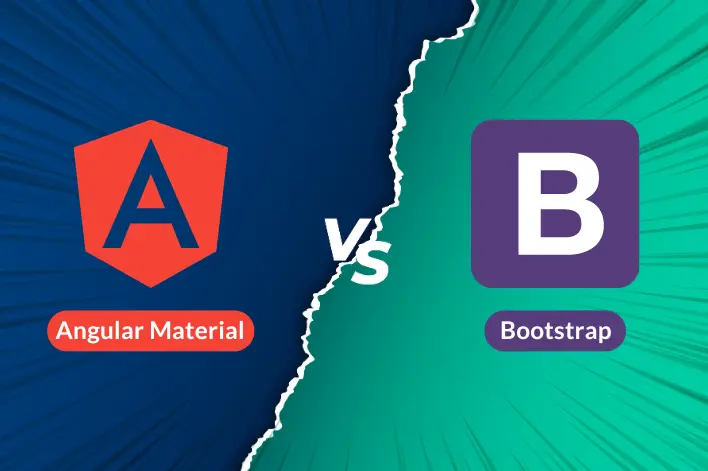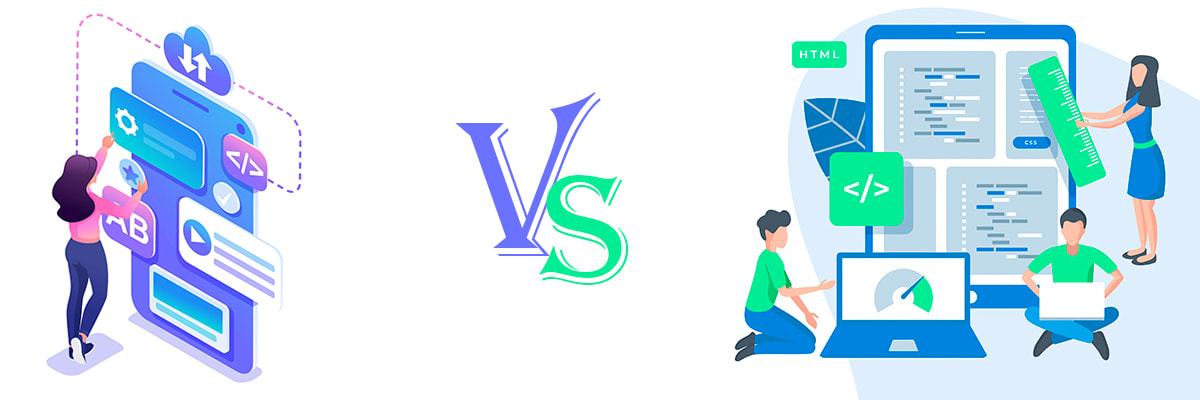Today businesses are focusing on those aspects which are necessary for the expansion of their business.
Whether it is a newly started business or an existing company, everyone has a software-related idea or project.
With the idea, they want to build a new system or make changes in the existing system, so they prefer to outsource the software development project.
When any business decides to outsource software development, there are plenty of other things to consider. The important thing is to take your time and research to make the best decision for your business.
When it comes to outsourcing software development, you will come across three types of contracts: Fixed Price agreements, Time & Material agreements, and Hire Dedicated Team.
These pricing models have generally used agreements throughout the market. Each has its pros and cons. Hence, it is essential to select the right development approach that fits your project.
Want to know how to choose the right development pricing model?
This article will discuss and compare all the models in detail, along with their advantages and disadvantages.
What is the Fixed Price Model?
Fixed Price Model, as the name, suggests there is a predefined price set for the specified scope of work.
In a Fixed Price model pricing contract, the client's project quotation gets approved before the development starts, and it remains unchanged during the pre-agreed timeframe of the project.
Here, you have to pay a single price for the fixed work scope, starting from research and development to fixing the bugs.
There is a specific deadline approved for the project by the software development team, in which the project gets completed.
Many businesses select the fixed price model because it defines services and the estimated cost for the project agreement.
When should you go for a Fixed Time Contract?
As we discussed above, the Fixed Time contract has a fixed work scope and a predefined deadline.
A fixed Time contract requires a well-defined scope and a definite vision of the project idea.
If you have decided to select the Fixed Time model, you should have a clear understanding and requirements of the project before the development starts.
This model becomes more appropriate for the clients, as they already know the budget and time required for the project development.
Even if there is a fixed scope of work in this contract, there still may be a chance where you need to implement some additional features and functionalities.
These extra add-ups may result in the delay of the deadline and increase the project's estimated cost.
Fixed Time Contract suits best for projects like:
- Minimum Viable Product (MVP)
- Short Term Projects
- Limited Budget Projects
- Projects with minimal requirements
Fixed Price model Advantages and Disadvantages
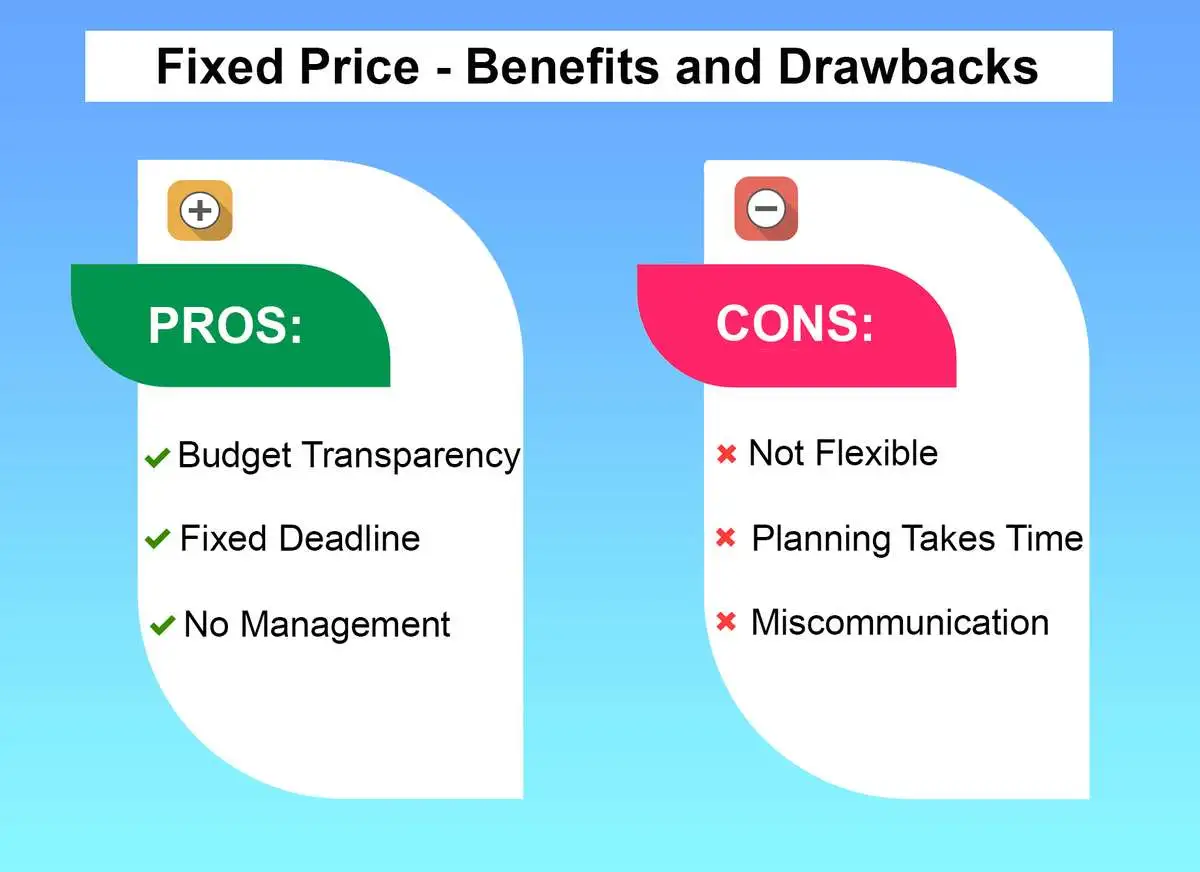
PROS
- Budget Transparency The development team will commit a fixed budget for the defined scope of work. There will be no extra payment for the agreed work scope.
- Fixed Deadline The specified work gets completed in a predefined time frame given at the initial agreement. The product gets delivered to you on time.
- No Management Fixed Time project does not need your active participation, and the developing team will be responsible for the project.
CONS:
- Not Flexible You cannot alter the project once the development starts. Any addition will delay the deadline and affect the pricing contract.
- Planning Takes Time In the Fixed Time project, the requirements should be very clear, so it takes a long time to plan everything in detail.
- Risk of miscommunication As there is less interaction between the customer and vendor during the development, there are chances of miscommunication.
What is the Time and Material model?
The Time & Material model is opposite to the Fixed Price model. This model is required when you don't have a clear vision of your project idea.
In the Time and Material Pricing model, you pay for the hours spent on developing the project. This model offers more flexibility in terms of development and budget.
Here the amount is paid for the real-time app development. You cannot estimate how much time and resources the project development will take.
As it is a flexible solution contract, you get the opportunity to make any changes in requirements during the development process.
The Time & Material model ensures that you will get the exact product matching your idea and requirements.
When should you go for a Time and Material contract?
Time and Material contracts can be used when your requirements and idea of the project are not clear, and there may be additions during the ongoing development process.
This model is ideal for projects having a large scope and dynamic requirements. Here you will not have an exact budget estimate, but the end product will be similar to what you wanted for your business.
In the Time & Material pricing method, customers will have more control over the project budget and the development services.
If you have a project idea in which there may be dynamic changes related to features and want to have some further additions following the market trend, you should go for the Time and Material agreements.
Time & Material Contract suits best for projects like:
- Medium & Long term projects
- The project idea is not clear
- Mobile apps & website development.
Time and Material model Advantages and Disadvantages
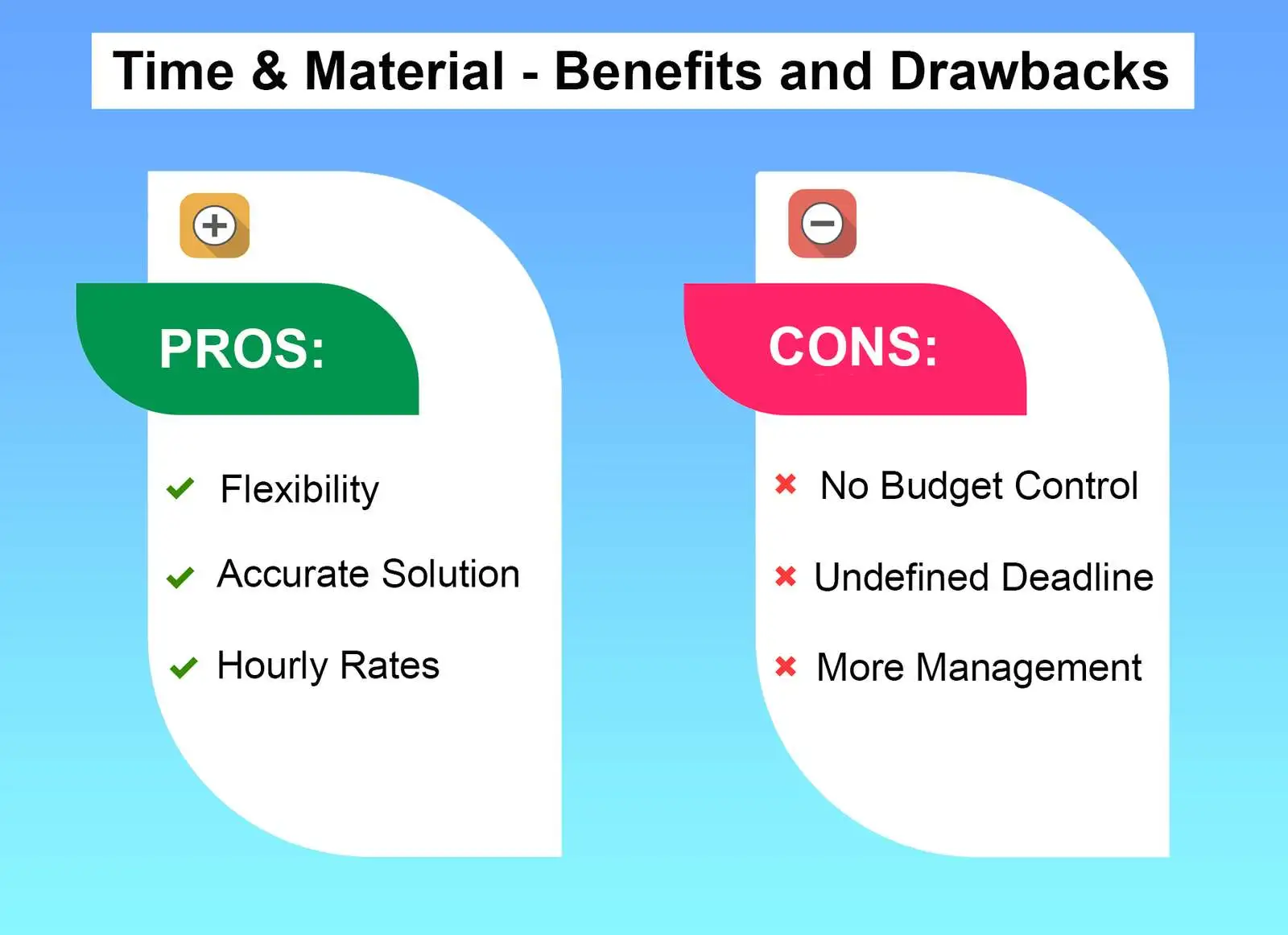
PROS:
- Flexibility Time & Material allows changes whenever required, and it will enable modifying the designs and features during the development process.
- ccurate solution Here you continuously follow the project's progress, so you are very clear about the software that meets your needs.
- Hourly rates There will be performance efficiency, and you can monitor the time spent on a particular task and pay for the actual work done.
CONS:
- No Budget Control You know that there will be additions to the project, but unaware of the count, so you cannot estimate the total development cost until the final release.
- Undefined Deadline As there are more add-ups, the final deadline will be unclear.
- More Management Although the developing team controls your project's delivery, you still need to get involved and provide feedback matching your project requirements.
What is the Dedicated Team model?
The dedicated team model is similar to the Time & Material model. It is also for long-term projects where requirements are unclear and vary with project scope changes.
In this model, a dedicated team is formed to deliver the project. This team has a depth of experience, skills, and expertise over the technology required to develop projects.
The pricing model for a dedicated team formed a monthly budget on the team size, including fixed service costs.
In the Dedicated Team model, the client has to manage and have full control over the team and project. Here the developers can directly communicate with the client.
When should you go for the Dedicated Team model?
The Dedicated Team model gets used when your business requirements are unclear and you don't have a team that qualifies the skills and expertise required for your project idea.
Hence, a dedicated outsourcing team can be connected to your team to perform a specific project.
If you know in advance that the requirements and features may change during the development process and when you don't have a skilled team for your specific project, you should hire the Dedicated Team for such a task.
Dedicated Team Contract suits best for projects like:
- Long term projects
- Projects with no precise requirements
- Flexible project scope
Dedicated Team model Advantages and Disadvantages
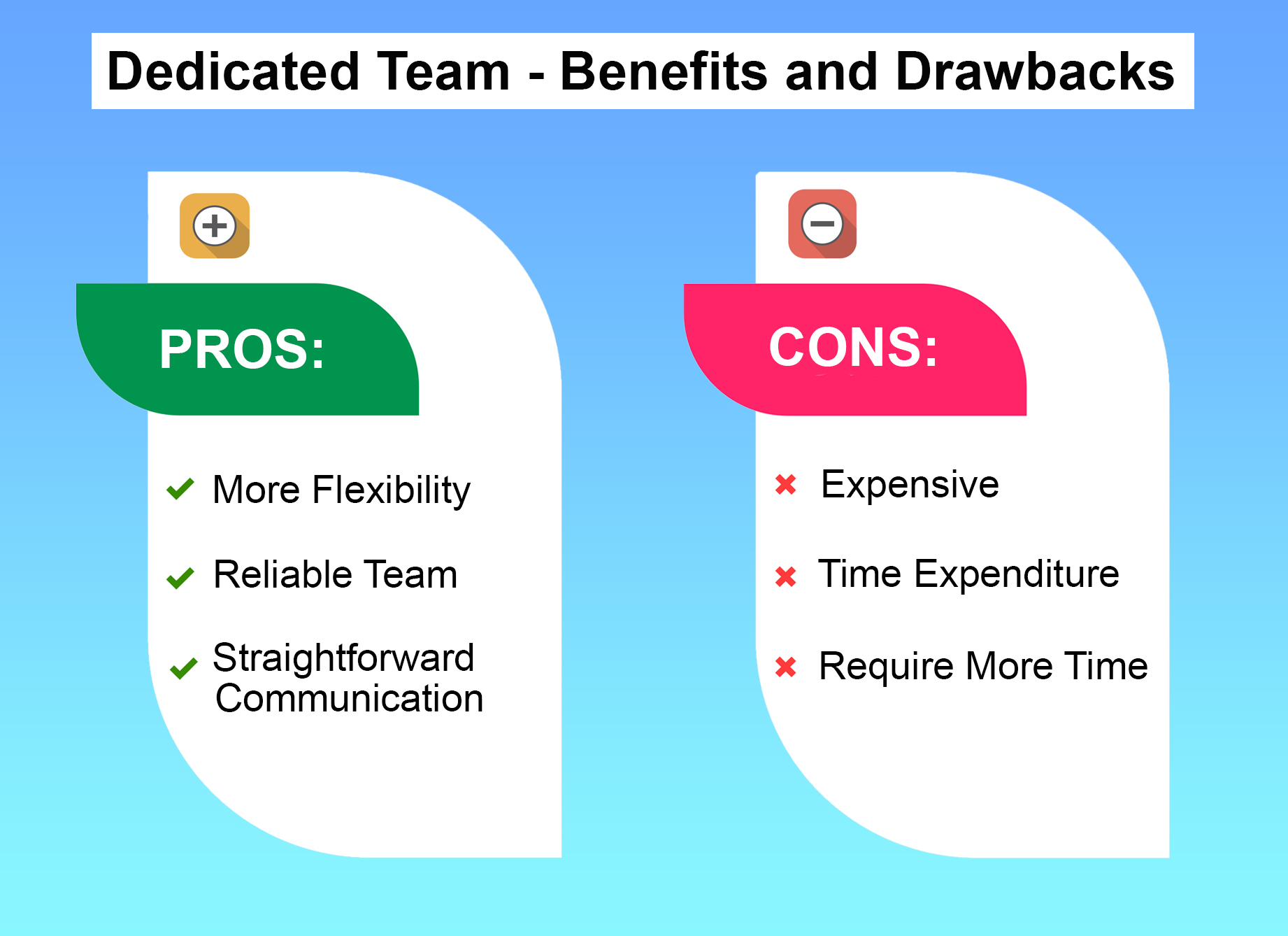
PROS:
- More Flexibility As the project is large in scope, there will be frequent changes at every interval. You can adjust anything from the project scope to the team size and project resources.
- Reliable team There is a Dedicated Team with high skills and experience, which is formed only for the specified project..
- Straightforward communication The client can directly communicate with the developing team and be involved in the project management aspects.
CONS:
- Expensive The project involves a dedicated team for the defined scope of work. It is a long-term project with dynamic requirements where you do not have a deadline. So it becomes a little expensive.
- Time Expenditure Your goals and requirements are unclear, so extra additions and modifications will take a long time to complete the project during the development process.
- Require more management When the projects are long-term and more flexible, there are chances of the project to take shape in another region. So maximum participation of the client is required in the project management.
Time and Material vs. Fixed Price vs. Dedicated Team – a quick comparison
| Time & Material Model | Fixed Price Model | Dedicated Team model | |
|---|---|---|---|
| PROJECT SIZE | Medium & Large size project | Small size project | Large size project |
| PRICING | Hourly rates for the project | Fixed-rate for the specified scope | Fixed price per month |
| BUDGET | There is a Flexible Budget | There is a Fixed Budget | There is a Flexible Budget |
| SOFTWARE REQUIREMENTS | Requirements Evolve as per the project | Requirements Frozen at the beginning of the project | Requirements Evolve as per the project |
| MANAGEMENT EFFORTS | More Management | Less Management | More Management |
| REPORT | Daily Report generated | Progress Report generated weekly | Comprehensive Report |
| TECHNOLOGY | Changes with situation | Predefined | Not Fixed |
Conclusion
If the requirements are small with no further improvements, there is no harm in selecting the fixed price contract.
However, if you think that your project is quite big and there will be some implications later in the features, you can go with Time and Material contracts or Dedicated Team contracts.
All three approaches have their benefits and drawbacks. You should think carefully about your project's different aspects, then pick a model that suits you best according to the requirement.
We hope this article helped you understand the difference between the pricing models and help you make the right decision.
If you have any further questions or want to discuss your project, reach out to us, our experts will guide you through the requirements.
